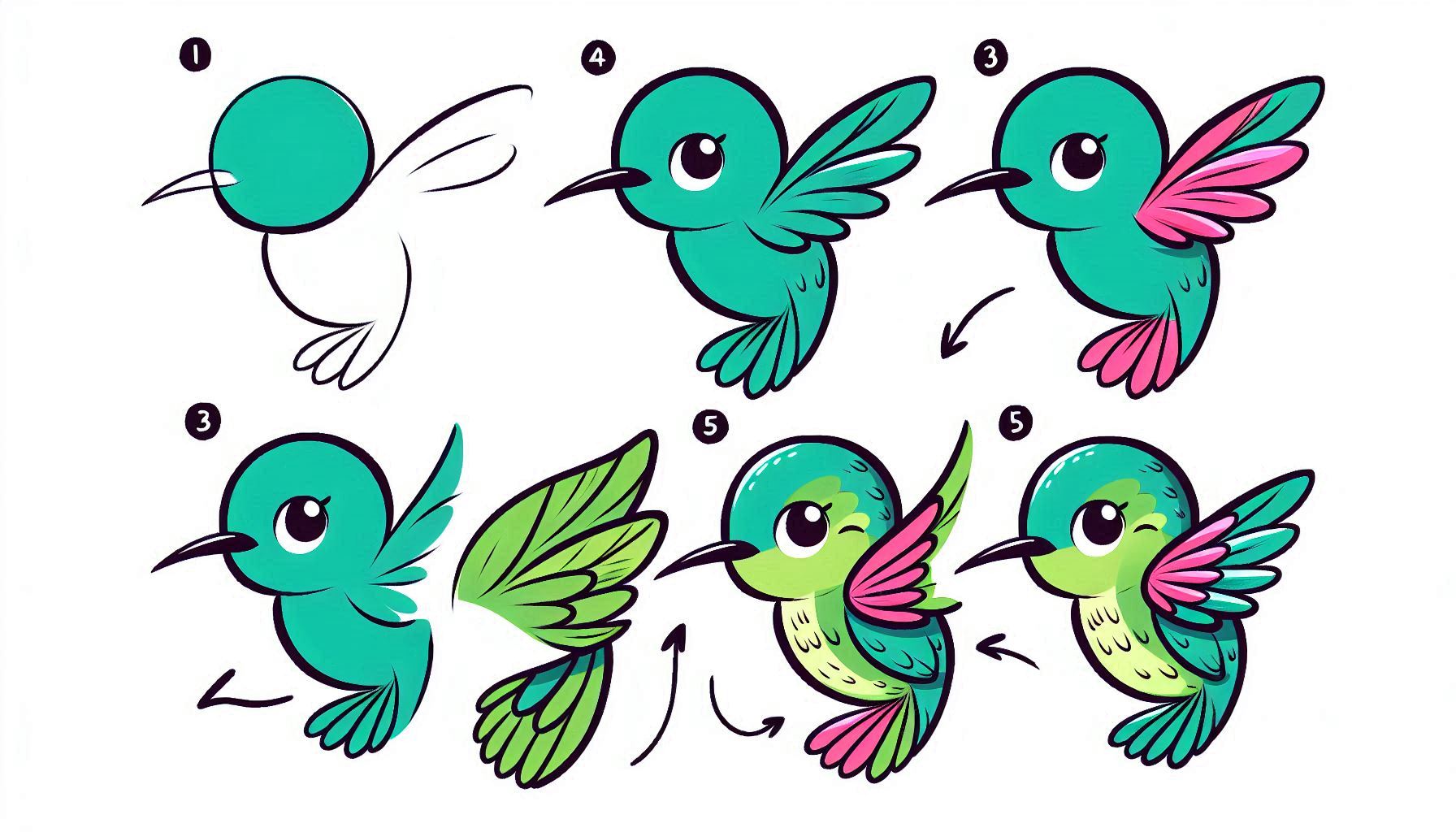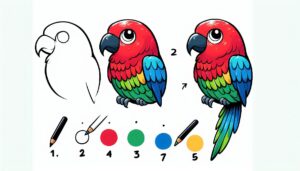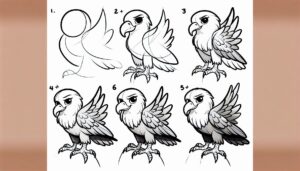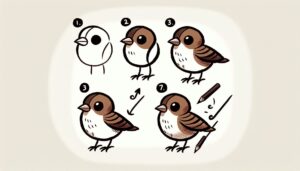Creating a drawing of a hummingbird allows you to capture the exquisite beauty and grace of one of nature’s tiniest and most vibrant creatures. Hummingbirds are famous for their shimmering feathers, petite stature, and lightning-fast wing movements. In this guide, we’ll take you through the process of drawing a hummingbird, paying close attention to its distinct characteristics and lively hues. Let’s embark on this creative journey!
Themes
The Fascinating Traits of Hummingbirds
Hummingbirds are well-known for their stunning feathers, quick wing movements, and small stature. Their silhouette is quite unique, featuring a slender body, a long, straight beak, and wings that hover with great speed. Understanding these features will enable you to create a depiction of a hummingbird that is both accurate and full of life.
The Joy of Capturing Shimmering Feathers
The vibrant plumage of a hummingbird brings an enjoyable twist to your artwork. Creating a realistic and eye-catching look involves working with various shades and techniques to capture their shimmering and reflective quality. This challenge will help you improve your skills in using colors and rendering textures in your artwork.
Discovering the Fascinating World of Hummingbirds Through Art
Hummingbirds are captivating creatures with intriguing behaviors and cultural importance. Exploring the vibrant appearance and role in ecosystems of these creatures offers a wonderful opportunity. This theme highlights the educational aspect of art and the chance to explore different aspects of hummingbird life through creative expression.
Steps: How to Draw a Hummingbird
First, start by sketching the fundamental outline.
Begin by sketching the fundamental outline of the hummingbird’s body. Start with a small, elongated oval or teardrop shape for the body. Create a smaller circle at one end of the body to represent the head. Hummingbirds have compact bodies, so it’s important to ensure that the proportions are small and delicate.
Step 2: Now it’s time to add the head and beak.
Place the head at the front of the body. The head has a rounded shape, with a long, straight beak that extends from the front. Sketch the beak with a slender, tapered form. Place two small, circular eyes on either side of the head. Hummingbirds have small, bright eyes, so it’s best to make them slightly larger and more detailed.
Step 3: Now it’s time to add the wings!
Hummingbirds possess wings that move at an extraordinary speed, setting them apart from other birds. Illustrate the wings expanding outwards from the body. Begin by drawing a gently arched line to create the upper part of the wing. Then, add another curved line beneath it to give the wing its proper shape. Use overlapping lines to create a textured effect when drawing the wing feathers. The wings should be displayed with a wide span or in a dynamic state.
Step 4: Now it’s time to add the tail!
Extend the tail from the back of the body. The tail should have a fan-shaped appearance, featuring multiple long and slender feathers. Try using a series of overlapping lines to depict the feathers of the tail. Enhance the appearance of the tail feathers to make them sleek and spread out.
Step 5: Attach the legs and feet.
Hummingbirds possess minuscule legs and feet. Extend the legs from the bottom of the body with your drawing. The legs should be slender and petite. Complete the illustration by sketching two small, gently curved lines that terminate in tiny claws. Proper foot placement is essential for perching or hovering.
Step 6: Enhance the visual appeal with texture and feathers
To capture the delicate details of the hummingbird’s feathers, create a beautiful representation by drawing a series of short, overlapping lines across its body and wings. When it comes to representing the appearance of hummingbirds, it’s best to use a combination of curved and straight lines. This will help capture the iridescent and smooth nature of their feathers. Take note of the feather patterns on the wings and tail to enhance the realism and add visual appeal.
Step 7: Perfecting the Form
Opt for a darker pencil or pen to carefully trace over your sketch and enhance the form of the hummingbird. Refine the contours of the body, head, wings, and tail. Make sure the body segments, legs, and wings are clearly defined and in the right proportions. Remove any unnecessary guidelines or overlapping lines to tidy up your drawing.
Step 8: Enhance with vibrant hues and subtle shading
Elevate your artwork by incorporating vibrant hues to highlight the shimmering feathers of the hummingbird. Opt for bright, vibrant colors such as green, blue, red, and purple to capture the natural beauty of the hummingbird’s feathers. Enhance the artwork by incorporating shading that brings out the intricate details of the feathers. Opt for lighter shades to enhance highlights and darker colors to add depth and dimension, resulting in a realistic and lifelike appearance.
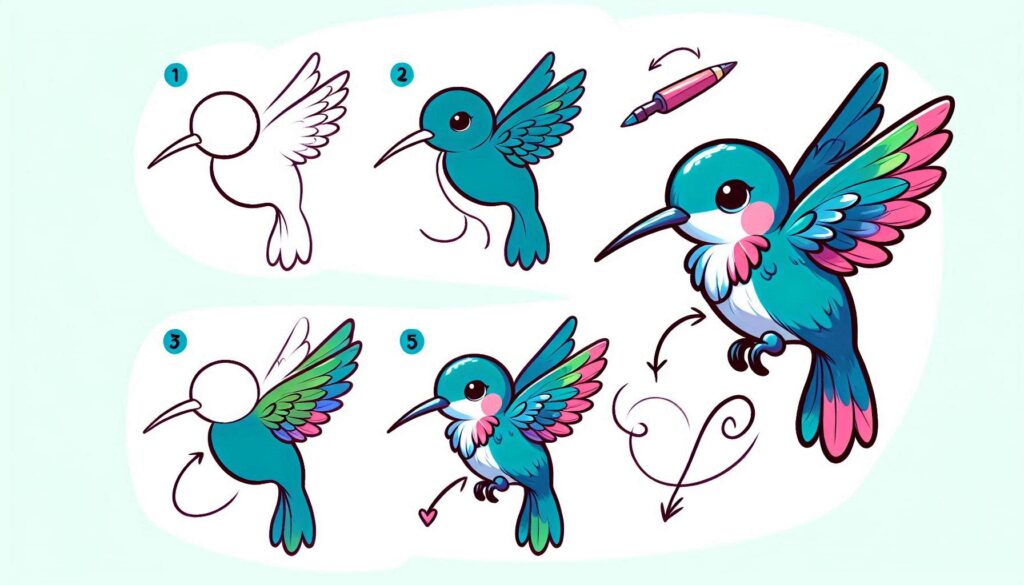
Theme 1: The Distinctive Traits of Hummingbirds
Exploring the unique features of a hummingbird through drawing allows you to appreciate its iridescent plumage, long beak, and rapid-moving wings. Understanding these features enables you to craft a comprehensive and precise portrayal. Recognizing the beauty of hummingbird anatomy can improve both your artistic abilities and your understanding of these captivating creatures.
Theme 2: The Joy of Capturing Shimmering Feathers
The iridescent feathers of the hummingbird provide an enjoyable and fulfilling challenge for artists. Capturing the radiant beauty of their presence requires imagination and expertise. Experience the joy of creating a lifelike hummingbird with vivid colors and intricate details.
Theme 3: Discovering the Fascinating World of Hummingbirds Through Art
Hummingbirds provide a fascinating opportunity to delve into the captivating world of bird life, thanks to their captivating appearance and important role as pollinators. Exploring different colors and textures in your artwork can create a visually engaging and educational experience. This theme celebrates the excitement of exploring different aspects of hummingbird life through art.
Conclusion
Creating a drawing of a hummingbird is an enchanting and immersive activity that enables you to depict the vivid characteristics and intricate details of this stunning creature. By following the steps in this guide and paying attention to its anatomy, colors, and details, you can create a captivating and realistic hummingbird drawing. Embrace the joy of creating and let your imagination soar as you bring this magnificent creature to life on paper!
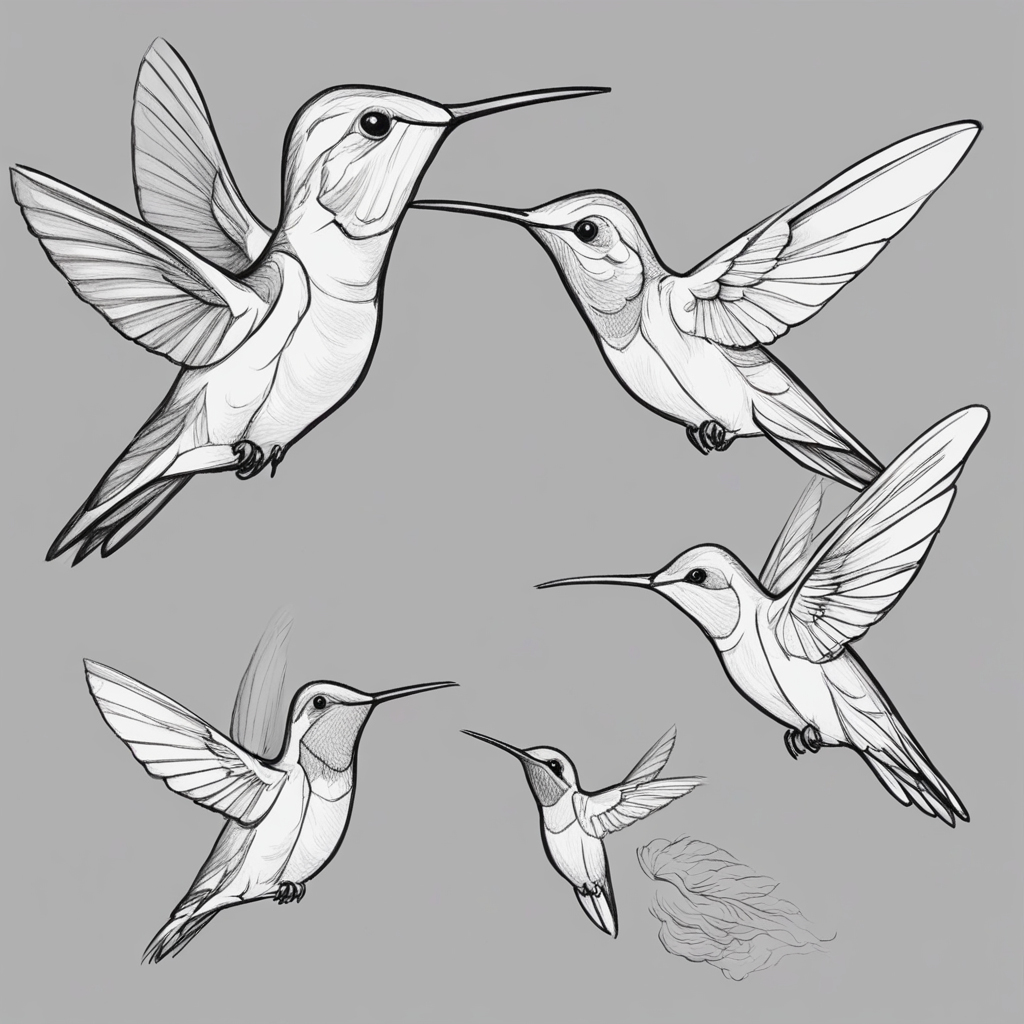
For a delightful and simple guide on how to draw a flamingo, you can find step-by-step instructions here. This fun tutorial provides easy steps, allowing young creators to dive into their imagination while discovering the beauty of these graceful and vibrant birds!

